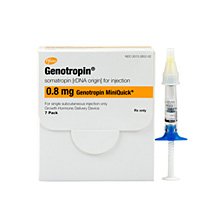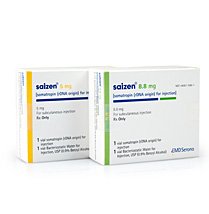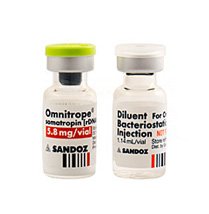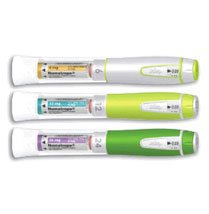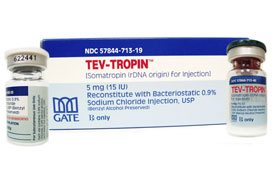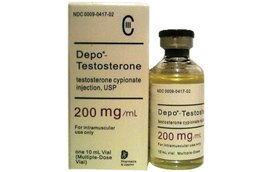Growth Hormone: Why You Need It At Every Age

Somatotropin, more commonly known as growth hormone (GH), is a vital chemical messenger stemming from the endocrine system. Although most commonly associated with juvenile and adolescent growth, GH carries out many functions in the adult body. Without enough growth hormone, the body may experience physiological, psychological, and cognitive breakdowns.
The primary functions we associate with growth hormone are:
- Youth – increasing height and internal organ growth
- Adulthood – maintaining muscle and bone mass, metabolism, brain functions, and immunity
These functions are just the tip of the iceberg – a small fraction of the impact of GH on the body. When a child or adult has a growth hormone deficiency (GHD), his or her body will experience multiple areas of breakdown. While children tend to present with short stature, an easy diagnosis, it is slightly more complicated to detect GHD in adults. A hormone specialist knows which signs to check for that other doctors might attribute to natural aging or other health concerns.
The body needs growth hormone at every age to support critical functions.
Where and How Is Growth Hormone Produced?
Multiple factors control the regulation of GH levels in the body. Below, we answer the two questions that explain the production of somatotropin.
-
Where is growth hormone produced?
The majority of growth hormone comes from the somatotrophs – cells in the anterior portion of the pituitary gland. With growth hormone secreted by the pituitary gland, in rapid, pulsatile bursts, it enters the bloodstream quickly, traveling throughout the body to the many GH receptor cells on tissues, in organs, and throughout the brain. There, GH binds to the receptor to initiate the actions associated with that cell.
-
What triggers the release of growth hormone?
Multiple factors influence GH release, including:
-
Growth hormone-releasing hormone – this peptide hormone, sent from the hypothalamus to the pituitary gland, promotes GH secretion
Somatostatin – when the hypothalamus senses that the body does not need more GH, it sends the peptide hormone somatostatin to inhibit GH production
-
Ghrelin – this hormone, secreted by the stomach (often in response to cortisol signals) stimulates hunger when the body needs energy, also binding to the somatotrophs to promote growth hormone release
Insulin growth factor 1 – also called IGF-1, this hormone’s production by the liver is stimulated by GH, and if its levels are high, the hypothalamus responds with somatostatin
- Sleep – the majority of the daily GH supply enters the bloodstream during phases of deep, slow-wave sleep (less than 7 hours of sleep can lead to a growth hormone deficit)
- Exercise – daytime exercise can promote increased spikes in GH production
- Stress – the stress hormone cortisol inhibits sleep and opposes growth hormone release
- Nutrition – poor dietary choices, weight gain, excess sugar, and processed foods inhibit GH production
The Function of Growth Hormone for the Adult Body
Unlike youth who require proper growth hormone function to help them achieve their full adult height, men and women experience different growth hormone effects, as highlighted below:
- Cell Regeneration – the primary function of GH, along with its mediator IGF-1, is to promote the production of new cells throughout the body. The cells maintain muscle and bone structure, healthy skin, hair, and nails.
- Metabolism – growth hormone actions on metabolism occur through the up-regulating of IGF-1 and its effects on peripheral cells and basal metabolic functions of the organs. GH promotes protein synthesis, amino acid uptake, lipid processing, triglyceride breakdown, adipocyte oxidation, insulin sensitivity, and liver glucogenesis.
- Immunity – through cellular regeneration, GH supports the actions of the thymus to maintain critical white blood cells to help the body fight off invading microorganisms and speed healing.
- Heart and Organs – cellular regeneration is crucial for the organs, as it keeps them from shrinking and decreasing their functions. Growth hormone improves cardiac capacity and output, supporting left ventricular wall mass and reducing the risk of cardiovascular disease.
- Brain – GH works directly on receptors throughout various regions of the brain that regulate concentration, attention, learning, spatial processing, memory, and other critical cognitive skills. Its neuroprotective benefits help maintain critical synaptic and neuronal connections.
- Emotions – along with the neuroprotective benefits of growth hormone, this vital chemical works on neurotransmitters to maintain healthy serotonin and dopamine levels that regulate mood and emotional stability.
- Libido and Fertility – growth hormone plays a role in supporting testosterone and estrogen production, influencing sexual desire, functions, and even male and female fertility. GH helps promote spermatogenesis (sperm cell maturation) and oocyte durability.
What Happens When Growth Hormone Levels Decline?
As growth hormone levels decline throughout adulthood, they typically go unnoticed since the decrease each year is small. However, over time, this can lead to a growth hormone deficiency, especially in people who lead sedentary lives. Individuals who are often stressed, do not get enough sleep, are overweight, or who rarely exercise are more at risk of developing GHD.
When GH levels decline, there is not enough growth hormone to reach all the body’s GH receptors. Those receptor cells that do not receive adequate GH cannot initiate their functions. The areas of the body that correspond with those receptors are the ones that experience a breakdown.
The most common signs of growth hormone deficiency are:
- Weight gain
- Fatigue
- Muscle and bone loss
- Aging skin
- Thinning hair
- Frequent illness
- Slow recovery
- Low libido
- Impaired sexual functions
- Infertility
- Insomnia
- Mood swings
- Depression
- Lack of focus
- Forgetfulness
- Social isolation
Benefits of Human Growth Hormone Therapy
It is possible to increase GH levels using doctor-prescribed human growth hormone injections.
What is human growth hormone?
Also called HGH or somatropin, human growth hormone benefits the body by providing a biologically identical supply of growth hormone to the body. HGH has the same molecular structure as somatotropin, allowing for its use by growth hormone receptors.
The many benefits of HGH for adults include:
- Weight loss
- More energy and endurance
- Better sleep
- Increased muscle mass and bone density
- Reduced joint pains and stiffness
- Happier mood – less depression
- Sharper brain functions and memory
- Firmer, younger-looking skin
- Thicker, fuller hair growth
- Stronger nails
- Less stress
- Better sleep
- Enhanced libido and sexual performance
- Improved fertility
HGH also helps balance blood pressure, cholesterol, triglyceride, cortisol, insulin, and glucose levels.
Is HGH Safe for Adults?
A frequently asked question is that of safety. Reports of potential side effects to HGH therapy have some adults concerned over receiving treatment. Adverse reactions occur most often when human growth hormone is used illegally without a doctor’s prescription.
Is human growth hormone safe for adults?
The answer is yes when it is medically prescribed to treat clinically diagnosed growth hormone deficiency. It is not safe to use for anti-aging, bodybuilding, or sports-related enhancement. Raising GH levels higher than usual can cause unwanted side effects.
Is human growth hormone good for you?
Again, the answer is yes, HGH is extremely beneficial to the body when someone’s pituitary gland is not providing enough of the hormone to meet the needs of the receptor cells.
How Do You Get Human Growth Hormone?
HGH therapy is prescribed by doctors who engage in adult hormone replacement therapy, such as endocrinologists and other specialists with advanced knowledge and training in this area of medicine.
Diagnosis of GHD begins with medical consultation, either in an office setting or by phone with a hormone clinic. Then, if deemed possible that a hormonal balance is present, the next steps are as follows:
- A quick visit to a local laboratory for a blood sample collection for testing
- Physical examination to provide crucial diagnostic information and rule out other potential causes of any present symptoms
- Completion of a health questionnaire, including all past and current medical issues, treatments, medications, supplements, and vitamins
Upon completion of these steps, the diagnosing physician will then determine the need for HGH therapy, including the personalized human growth hormone dosage.
For additional information on how to increase growth hormone levels, please contact Greenberg Health for a free phone consultation with one of our clinical advisors.
 Somatotropin, more commonly known as growth hormone (GH), is a vital chemical messenger stemming from the endocrine system. Although most commonly associated with juvenile and adolescent growth, GH carries out many functions in the adult body. Without enough growth hormone, the body may experience physiological, psychological, and cognitive breakdowns.
The primary functions we associate with growth hormone are:
Somatotropin, more commonly known as growth hormone (GH), is a vital chemical messenger stemming from the endocrine system. Although most commonly associated with juvenile and adolescent growth, GH carries out many functions in the adult body. Without enough growth hormone, the body may experience physiological, psychological, and cognitive breakdowns.
The primary functions we associate with growth hormone are:


















 Norditropin
Norditropin